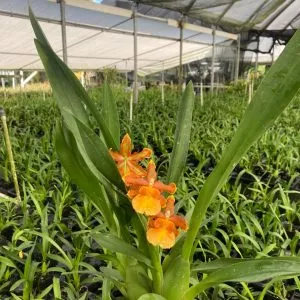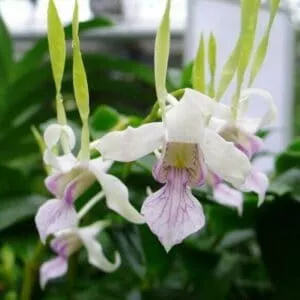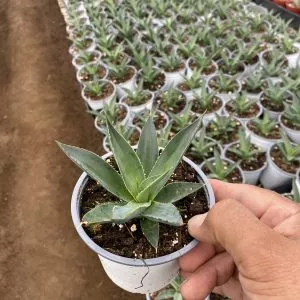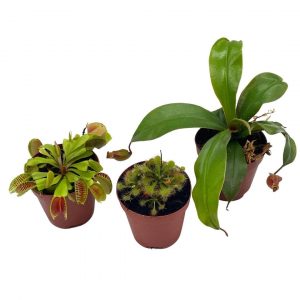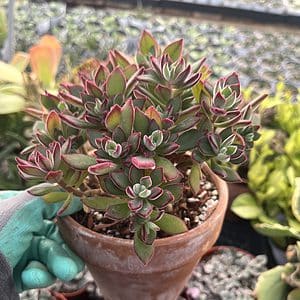No products in the cart.
If you enjoy ornamental gardening, you will love flowering dogwood trees. Still, we have a special variety that we want to introduce you to, the ivory halo dogwood. 🥰
The wonderful shrub is as striking as its flowering counterparts. The shrub might not be selected for the creamy white flowers but more for the light green leaves.
Plus, it has brilliant red winter stems or bright red twigs to white berries, but the foliage on the shrub borders fits the bill compared to the white flowers.
Plant Name: Cornus alba Bailhalo
Other Name: Ivory Halo Dogwood
Plant Type: Deciduous shrub
Native Areas: Cultivar
Light Requirement: Full sun to part shade
Watering: Moderate
Fertilizer: High Nitrogen Fertilizer
Toxicity: Non-toxic
Temperature: Cool temperatures
Propagation: Hardwood cuttings
Growth: 4-6 feet tall and wide
Soil Type: Acidic to neutral soil
USDA Hardiness Zone: 3-7
More About Cornus Alba Bailhalo

The excellent shrub has dark red stems adding winter interest to the garden with its compact size. It grows well on shrub borders or as a specimen plant at the front entrance. The shrubs stun you during the colorless months with their colorful stems.
But you need not wait for winter to enjoy this plant’s charm.
Whether grown in the landscape or potted plants with the correct container sizes, the variegated leaves add interest to the garden from spring to fall. The colorful red branches of berries look more appealing in naturalistic plantings or a low-screening hedge as it is more ornamental than the flowers.
When forming a low hedge, it creates a beautiful landscape adding interest year-round with the colonial spread to form thickets. The white berries attract birds to wildlife during the warm months but remain deer-resistant.
Dogwood Varieties
Among the species, you get four types of dogwood plants as follows:
Cornus Florida Flowering Dogwood

The dogwood has beautiful shades year-round, with pink or white flowers developing in early spring or late winter. Then you have the foliage that turns attractive shades of green to dark red, followed by bright red berries.
Cornus Kousa

The main difference with this plant is that the leaves appear before the flowers, forming flat-topped clusters of flowers with fall fruit that looks like raspberries and is edible.
Cornus Nuttallii

The Pacific dogwood thrives well in most USDA hardiness zones except in the east. It has an upright growth forming a tree.
Cornus Mas

The Cornelian cherry dogwood looks fabulous in a mass planting thriving in the growing zones 5 to 8. Still, the colorful stems look ragged by the end of the growing season resulting from hot summer climates.
The plant blooms in early spring or late winter with yellow flowers and the cherry fruit you can use in preserves. It grows as a multi-stemmed shrub in various growing zones to add interest with the fall color to the garden.
Ivory Halo Dogwood Care
The Cornus alba Bailhalo is not difficult to care for and has minimal problems with only three essential needs. Plant the hardy shrub in organically rich, well-drained soils and keep them consistently moist.
Please provide them with full sun and afternoon shade, and do not expose the plant to excessive heat in late spring or summer.
Cornus Alba Light Requirements

To keep the red stems and light green leaves attractive, provide full sun to partial shade in warm climates. Providing enough light keeps the variegated leaves looking beautiful for light summer color. The stem color will brighten the landscape against a snowy backdrop in winter.
Recommended Soil

Ivory halo adapts to different soils but performs its best in organically rich, well-drained soils that are kept moist. It thrives in a neutral to acidic pH level and is best to test the soil before planting.
Doing this helps determine if you need to amend it before planting instead of afterward.
Cornus Alba Watering
The plant needs moisture to thrive and can tolerate standing water briefly. During summer, it is essential to maintain soil moisture when experiencing high temperatures. As necessary, you must often water young plants during the first growing season to become established.
You can give shrubs an excellent soaking to prevent standing in dry soils or add a layer of mulch to help retain water during dry spells ☔.
Temperature and Humidity
Temperature can cause problems with your ivory halo dogwood, as it can lack moisture when to warm. The best is to plant them in a growing zone that suits them.
Or you may need to provide them with the climate they need. Scorching summer climates give them a spot in indirect light to receive direct sunlight in the morning with afternoon shade.
Hence we recommend checking the USDA zone that works best for the cultivar you have.
Fertilizing Cornus Alba Bailhalo
You need not apply a supplemental feed, but if you need to use one, we recommend one high in nitrogen to help new stems grow. The main attribute of the plant is not the blooms. The plant will turn attractive shades during the year with the variegated leaves.
Pruning Ivory Halo Dogwood
If you want to encourage young stems to grow, then pruning helps. You can cut the oldest stems to one-third every spring. Alternatively, you can cut the shrub to about six inches yearly to provide a rounded form for your plant in the landscape.
These shrub stays naturally compact and does not need a lot of pruning. If you do not want the plant to spread, you can promptly remove root suckers from the ground.
-
Free Shipping$39.99Sold By: Aloha Hawaii Orchids
$44.99In stock
Oncidium Catatante Fragrant Orchid ‘Pacific Sunspots’
Rated 4.65 out of 5 based on 268 customer ratings01Sold By: Aloha Hawaii Orchids -
Free Shipping$39.99Sold By: Aloha Hawaii Orchids
$44.99In stock
Orchid Dendrobium Antennatum live plants Antelope New Guinea Spikes | Fragrant Scent From Hawaii
Only 3 available and it’s in 1 people’s basketRated 4.65 out of 5 based on 268 customer ratings00Sold By: Aloha Hawaii Orchids -
$18.99Sold By: Cacti and Exotica
In stock
Agave blue glow
Rated 4.98 out of 5 based on 59 customer ratings00Sold By: Cacti and Exotica -
$15.99Sold By: BubbleBlooms
In stock
Satin Pothos, Silver Vine, Silver Cloud, Silk Pothos Silver Philodendron in a 4 inch pot, very filled
Only 96 available and it’s in 1 people’s basketRated 4.81 out of 5 based on 279 customer ratings01Sold By: BubbleBlooms
How to Propagate Ivory Halo Dogwood
Dogwood, Cornus alba, you can propagate with hardwood cuttings by doing the following:
-
Take cuttings from healthy shoots from the current season’s growth in summer.
-
Cut the cuttings with a bud at the base and remove the lower foliage.
-
Place the cuttings in a bag to prevent moisture loss while preparing a growing medium.
-
Fill a container with gritty compost and insert your cuttings around the edge of the pot.
-
Water them well, place them in a cold frame in a sheltered spot, and moisten them.
Once your seedlings develop a strong root system with new growth, you can transplant them into your garden.
Common Pests & Plant Diseases
When looking 👀 at pests and diseases, you do not find serious problems to kill your plant. The most common pests are leaf miners or scale and can be removed with insecticidal soaps. You can remove the infected foliage.
Blight, leaf spots, and canker are common diseases caused by underwatering and extreme heat. Provide your Ivory halo dogwood with good drainage and soil to retain moisture with indirect sunlight in warm regions in the afternoon.
Frequently Asked Questions
The ivory halo, when planted, is a showy shrub with a fast-growing habit of up to 12 inches per year when grown in the right conditions.
The Cornus alba Bailhalo can die for many reasons, but the most common is the high temperatures resulting from standing in dry soils, not allowing the plant to develop a robust root system.
Cornus alba Bailhalo prefers growing in direct sunlight compared to shade. But in warm regions, it can do with some afternoon shade.
While white flowers develop in late spring to summer, the variegated leaves stand out with fall color. When the foliage falls, the purple-red stems with berries stand in winter.
The plants prefer direct light compared to standing in the shade. But in hot climates, it benefits from some afternoon shade.
These shrubs are not poisonous to pets, but the berries can cause a gastrointestinal upset resulting in diarrhea or vomiting.
Whether you want to buy, sell, or simply reach out to other plant enthusiasts, Plantly is the right place to be!
-
Free Shipping$8.00Sold By: Sam's Curious Cultivars
In stock
Sedum Japonicum, StoneCrop, 2x2in Square, Bare-Root
Only 5 available and it’s in 1 people’s basketSold By: Sam's Curious Cultivars -
$34.99Sold By: BubbleBlooms
$39.99In stock
Carnivorous Plant Set, Venus Fly Trap Assortment, Nepenthes, Rotundifolia, Set of 3, premium collection,2 inch pot, windowsill plants, gift
Only 10 available and it’s in 2 people’s basketRated 4.81 out of 5 based on 279 customer ratings00Sold By: BubbleBlooms -
$39.99Sold By: Cacti and Exotica
$55.00In stock
Echeveria pulvinata—Ruby Chenille Plant
Rated 4.98 out of 5 based on 59 customer ratings00Sold By: Cacti and Exotica -
Free Shipping$9.99Sold By: Gar-Zen Botanical Design
In stock (can be backordered)
Amaryllis “Luna White” Organic Seeds Ship Free
Only 20 available and it’s in 2 people’s basketRated 4.86 out of 5 based on 49 customer ratings00Sold By: Gar-Zen Botanical Design
